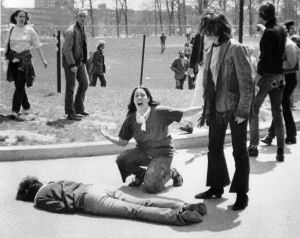In the book “Distraction” by Bruce Sterling, characters discuss the event of a flash mob that appeared at a bank branch armed with tools that systematically destroyed the facility in minutes. This book was pretty much science-fiction when it was written, today, maybe perhaps there’s more truth to its environment:
It’s November 2044, an election year, and the state of the Union is a farce. The government is broke, the cities are privately owned, and the military is shaking down citizens in the streets. Washington has become a circus and no one knows that better than Oscar Valparaiso. A political spin doctor, Oscar has always made things look good. Now he wants to make a difference.
Is this happening already in America? You bethca! Violent flash mobs have made their appearances in Philadelphia, Boston and Brooklyn this year with mobs of teenagers from poor neighborhoods busing themselves in and running loose upon the city downtown. 150 bored teenagers can do a lot of damage. Imagine what 1000 or even 10,000 people could do if they felt the need. This is why its important that the State not abuse its power with non-violent people. One Pulizer-scale photo like this:
can take your audience from their gentle and peaceful Kumbaya and tranced-drumming pace and radicalize a significant number to start a war with you.
Mobilizing Your Flashmob Imagine you want to mobilize a whole lot of people from a public channel within a city. You have a goal, and you want it to happen at a time and place. So you start tweeting locations like:
- Washington Circle Park.
- Stanton Park.
- East Potomac Park.
- Brentwood Park.
- … and so on.




